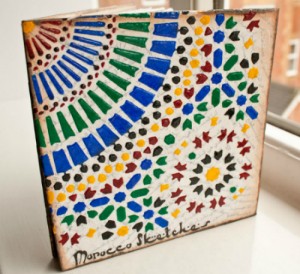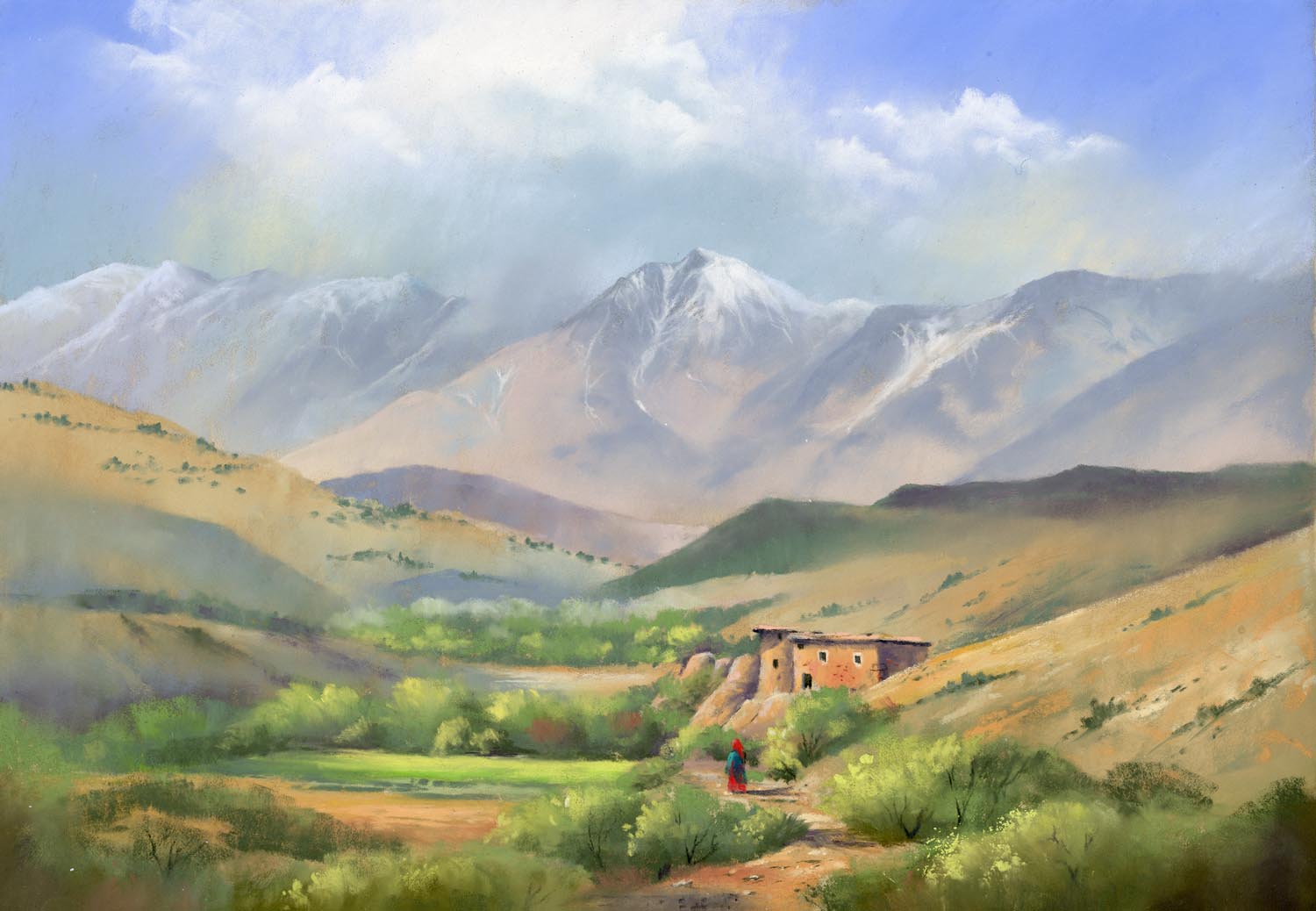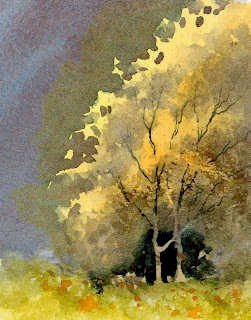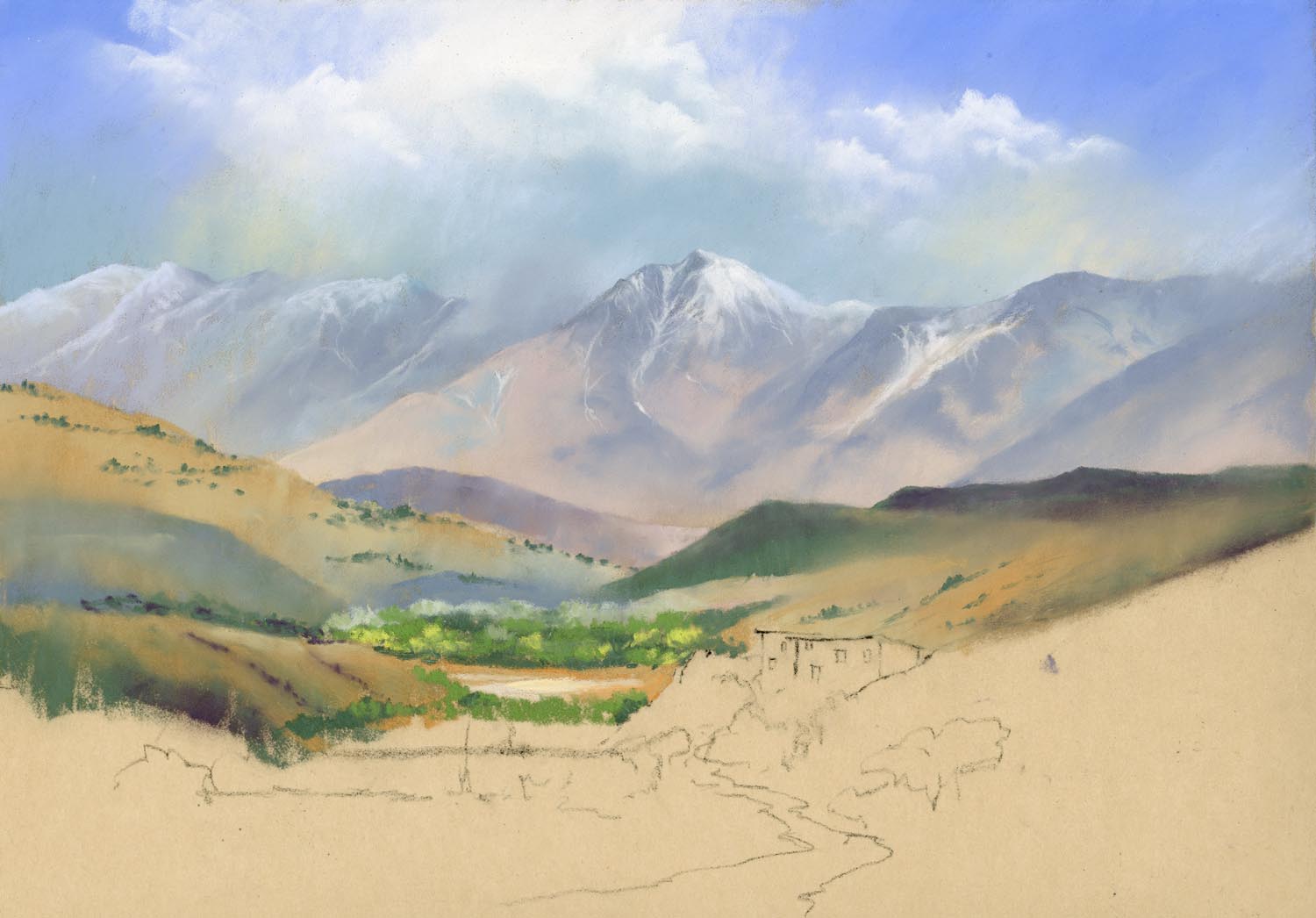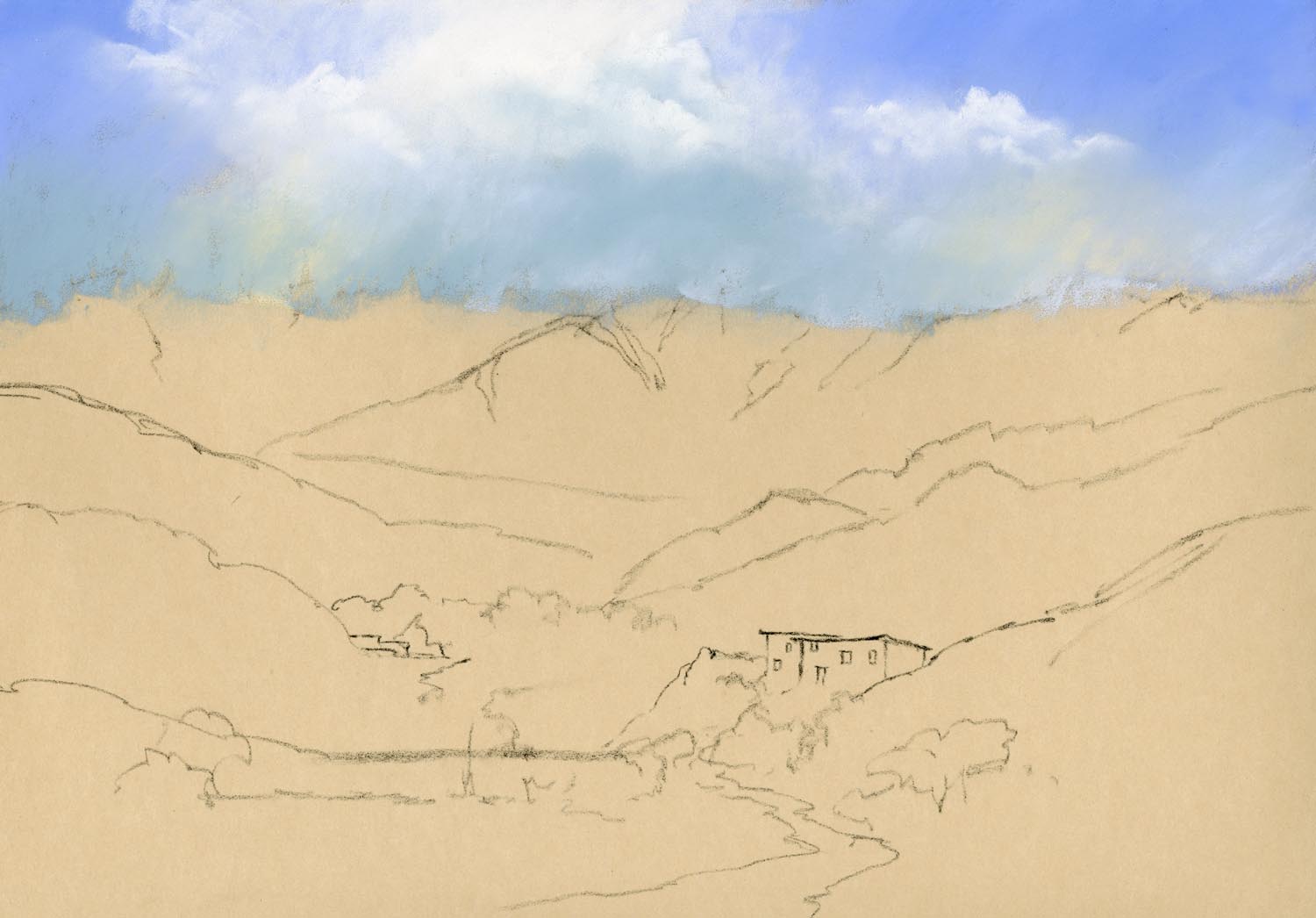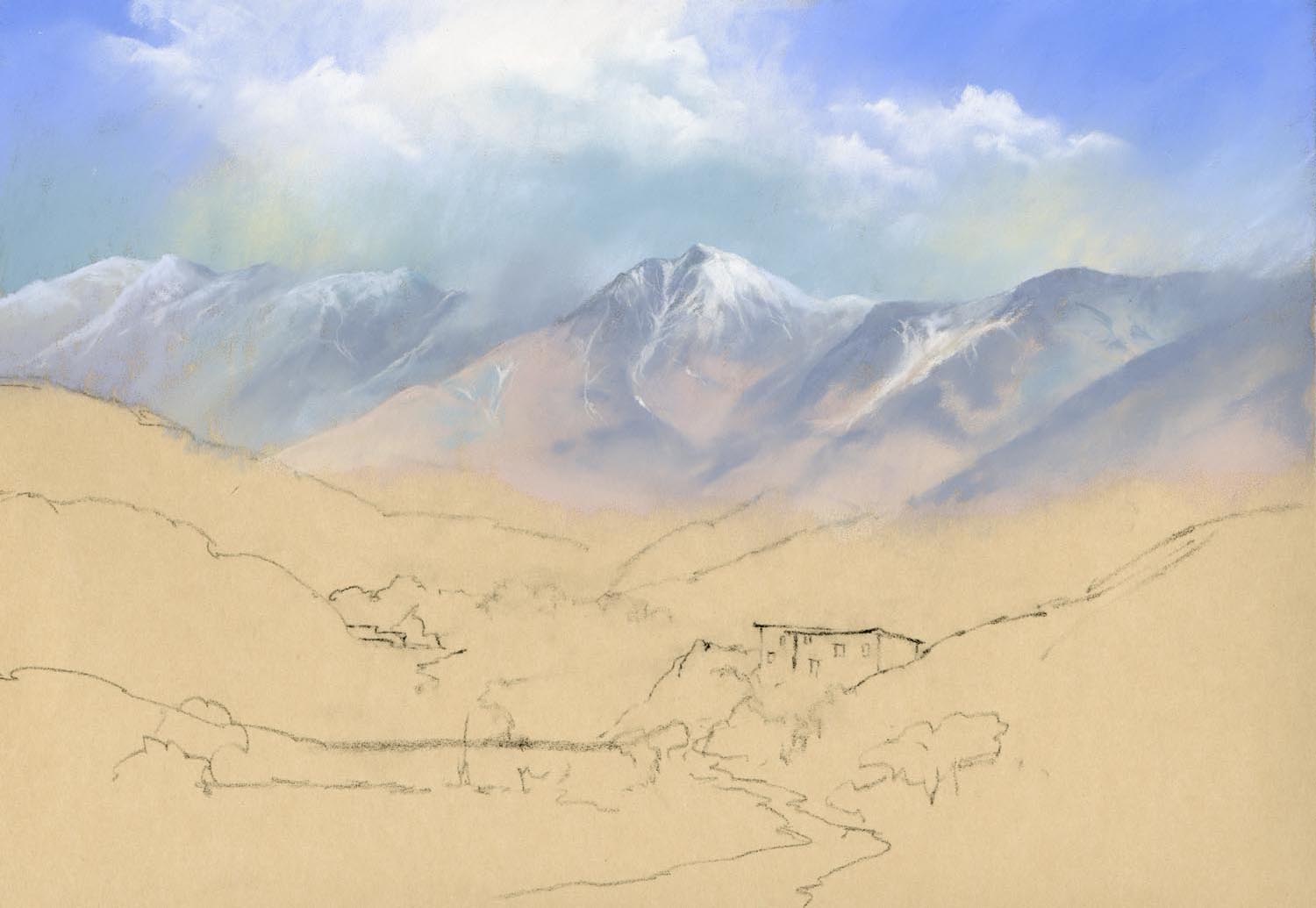Autumn colours have been late arriving this season. I’ve just returned from running a painting course in Snowdonia, hoping for a blaze of colour, but sadly only a few trees co-operated. Despite the strong winds a lot of leaves remain on the trees and it is still worth getting out and seeking colourful subjects out there.
This is a small demonstration piece I did for the group. While I use a number of warm colours for autumn trees, here I’ve applied gamboge, a lovely warm yellow, with cadmium orange. To make your autumn colours really sing you need to juxtapose them against a mauve or blue-grey, as these are complementary colours. You will see this phenomenon at its best where autumn trees stand against distant hills or mountains, or against a dark sky as in the painting.
There are some good examples of this in my Mountains & Moorlands in Watercolour book, and the DVD of the same name. There is a special offer on this package, which is only available on my website.
At the moment Jenny is working on a fascinating staged pastel painting of a Moroccan scene – I pop into her studio every now and again to have a peep, and you can find it at on her blog
Don’t forget, my exhibition in Lincoln Joyce Fine Art continues until Saturday 9th November, where you will find some watercolours from some of my books, as well as new paintings. They can be found at 40 Church Road, Great Bookham, Surrey, Telephone 01372 458481
Like this:
Like Loading...

